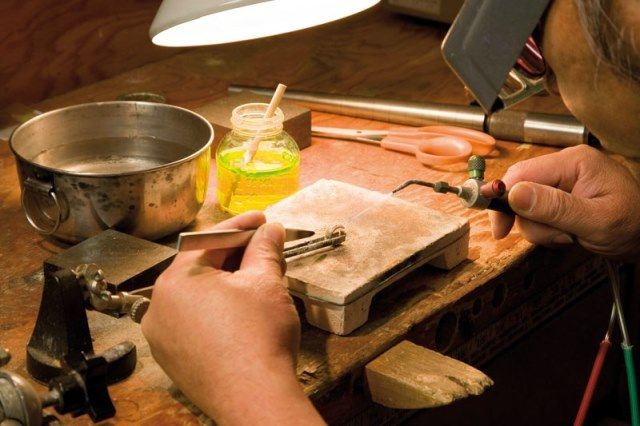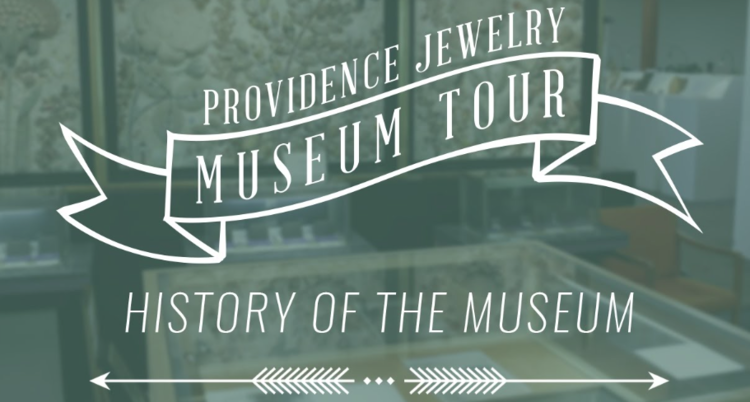-
Laurie White: 150 Years of Baubles, Bling and the Rise of America’s Only Jewelry Billionaire
Laurie White, president, GPCCWednesday, March 14, 2018
Throughout 2018, we will be posting to our Then and Now blog series to unearth the roots of our state’s key industries. Today, our earliest entrepreneurs and Rhode Island’s rich and surprising history of jewelry manufacturing.
Then
In the 1880s, Rhode Island was the No. 1 state for jewelry manufacturing, accounting for one quarter of the entire country’s production, thanks to the more than 200 Providence-based jewelry firms that employed almost 7,000 workers. How did the smallest state become the “jewelry capital of the world”?

To put our finger on the industry’s origins in Rhode Island, we have to trace back even further, to 1794, when a man named Seril Dodge opened his jewelry store on North Main Street in Providence. He made shoe buckles that the dandies of that day took a shine to. But it was his nephew, Nehemiah Dodge, who would go on to develop an early process to plate lesser metals in gold and silver, whetting the nation’s appetite for inexpensive jewelry. Around the Dodge family, a generation of innovative jewelry manufacturers sprang up. A Jewelry District hummed to life in Providence, powered by an immigrant labor force. And around the country, the Industrial Revolution spurred increased production and economic growth. (Of note, Rhode Island is also widely credited as the birthplace of the Industrial Revolution. In 1790, English immigrant Samuel Slater built the first American factory to successfully produce cotton yarn with water-powered machines.)
Jewelry-making in Rhode Island flourished for a century, and rags-to-riches stories abounded. The Great Depression put growth in the Jewelry District on pause until after World War II, but Rhode Island emerged from wartime with manufacturing as its dominant activity. And though the Jewelry District was bisected by the construction of Interstate 195 in the 1960s, jewelry represented the state’s largest manufacturing sector by 1978. At that time, Rhode Island produced 80 percent of the country’s costume jewelry and employed 32,500 workers in the industry.
Along the way, evolving trends in fashion helped feed demand for Rhode Island-made baubles. As Peter DiCristofaro, the jewelry historian who founded the Providence Jewelry Museum, tells it, “You had the counterculture, birth control—and pierced earrings. In the ’70s you had disco jewelry, and in the ’80s you had big hair and big jewelry.”
Then came a steep and sudden decline in sales. Fashions changed, and overseas companies that offered cheap labor began competing with local makers. Many Rhode Island companies went out of business. Factories closed. By 1996, only 13,500 people remained employed in jewelry in the state.
Around the country, manufacturers were telling similar stories. According to the Bureau of Labor Statistics, in 1960, about one in four American workers had a job in manufacturing. Today fewer than one in 10 are employed in the sector.

Carolyn Rafaelian, founder of Alex and Ani. Photo by Rhode Island Monthly magazine
Now
Nevertheless, the one-time “jewelry capital of the world” is undergoing a revival. Besides being home to Alex and Ani, the half-billion-dollar brand founded by native Rhode Islander Carolyn Rafaelian, the state can boast one thousand jewelry-related companies. According to a recent WWD account, “Rhode Island’s jewelry manufacturing is a nearly self-sustaining ecosystem—invisible to those not in-the-know. Stuffed into unassuming pre-war millhouses, their floorboards are worn to a sloping sheen and the sound of arcane machinery fills the air with a droning hum.”Tiffany & Co., David Yurman, Shinola and Jennifer Fisher all now manufacture their wares in the state. From its HQ in Cranston, Jewelry Concepts has become a world leader in personalized jewelry, annually producing over one million unique personalized jewelry items. And companies like Luca + Danni and Alexys Ryan are quickly writing their own success stories. Why the return to manufacturing in Rhode Island? Besides the public’s embrace of the Made in America movement, jewelry makers cite frustration with quality control and delays experienced with overseas manufacturers. Designer Pamela Love, who manufactures part of her line in Rhode Island, recently told WWD, “The quality is fantastic, [the Rhode Island factories] do such a great job. I think that the chain factories, the finding factories are on par with Italy.”
Today, Rhode Island once more has the highest concentration of jobs in the jewelry industry in the United States. The 30-year-old Providence Jewelry Museum, which has long resided quietly on a dead end street in Cranston, is now being made over as the National Jewelry Museum and will be opened to the public. It will move to Providence, where it can better put the state’s industrial past on display, in the form of 50 Providence-made machines, 200 pieces of jewelry and 20,000 company samples spanning more than two centuries of jewelry making. Museum president Edward Lemire says, “We are on a mission to make [the museum] a bigger, better, permanent, public tourist attraction. A lot of people had no idea this all went on in the United States. This will bring that awareness back.”
By most accounts, one jewelry brand in particular has helped Rhode Island return as a world player on the jewelry scene: Alex and Ani, a bangle-making brand founded in 2004. Not only has the brand grown from $4 million in sales in 2010 to $500 million in sales in 2015, but it bridges Rhode Island’s past with its present, since founder Carolyn Rafaelian opened Alex and Ani out of her father’s Rhode Island jewelry factory. She and her sister had worked at the factory as teenagers in the 1960s, and she began to design jewelry herself. Today, her designs have made her America’s only jewelry billionaire, and she sits at the No. 18 spot on the Forbes list of America’s Richest Self-Made Women.
Gov. Gina Raimondo, another native Rhode Islander, also has familial ties to Rhode Island’s bejeweled past: “I had a great life as a kid—my dad had a job at the Bulova Watch company,” she told Rhode Island Public Radio. “Good jobs like his gave people dignity in their work. It’s important that Rhode Island gets [manufacturing] right.”
The governor, whose late father lost his job at the watch factory when work was shipped overseas, has committed to rebuilding and reinventing Rhode Island’s manufacturing prowess. Jewelry will always be an important part of that story.
Tell a Friend

